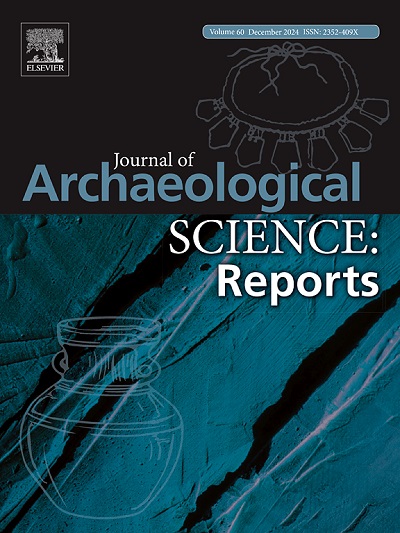解读西周陶器群:来自材料表征和几何形态计量学分析的见解
IF 1.5
2区 历史学
0 ARCHAEOLOGY
引用次数: 0
摘要
车间内生产群体的识别一直是一个吸引广泛学术关注的研究课题。在这种类型的调查中,广泛采用了材料特征、成型技术和陶器类型等一系列指标。此外,容器特定部位(如边缘)的形态变化已被证明反映了不同生产群体和生产事件之间的差异。然而,以往的研究很少将陶瓷形态分析与陶瓷材料特性结合起来,揭示生产类群的差异。为了整合这两种重要类型的数据,充分挖掘其在分析中的潜力,本研究致力于开发一种基于微ct和几何形态计量学(GMM)的方法,并将其应用于大元村遗址出土的西周历三脚架碎片。该遗址是西周晚期的一个陶器作坊,有三个集中的生产区,专门制作黎鼎。本研究系统地研究了该遗址黎氏三足的材料特性和形态特征。我们已经确定了在单个生产区域内材料组成和形态特征的相对高度的一致性。相比之下,三个区域之间出现了明显的差异,强烈表明在现场存在离散的生产群体。我们认为,大元村陶器作坊的组织方式是全面的,三个区域能够完成从原材料到成品的整个生产过程,同时保持自己的形态偏好。本文章由计算机程序翻译,如有差异,请以英文原文为准。
Decoding potter groups of the Western Zhou: insights from material characterization and geometric morphometrics analysis
The identification of the production groups within a workshop has been a research topic attracting extensive scholarly attention. A series of proxies including material characteristics, forming techniques and pottery typologies have been widely employed in this type of investigation. Additionally, the morphological variation at specific parts of the vessel (e.g., the rim) has been proven to reflect the differences between various production groups and production events. However, previous studies have rarely combined pottery morphology analysis with ceramic material characteristics to reveal production group distinctions. In order to integrate these two important types of data and explore their full potential in the analysis, this study is dedicated to developing an approach based on micro-CT and Geometric Morphometrics (GMM), which is applied to the Western Zhou Li tripod sherds excavated from the site of Dayuancun (大原村). The site was a Late Western Zhou pottery workshop with three concentrated production zones and specialized in making Li tripod. This study systematically investigate both the material properties and morphological features of the Li tripods from this site. We have identified a relatively high degree of consistence in both material composition and morphological characteristics within individual production zones. In contrast, marked dissimilarities emerge among the three zones, strongly suggesting the presence of discrete production groups operating at the site. We contend that the Dayuancun pottery workshop was organized in a comprehensive manner, and the three zones were capable of completing the entire production process from raw materials to finished products while maintaining their own morphological preferences.
求助全文
通过发布文献求助,成功后即可免费获取论文全文。
去求助
来源期刊

Journal of Archaeological Science-Reports
ARCHAEOLOGY-
CiteScore
3.10
自引率
12.50%
发文量
405
期刊介绍:
Journal of Archaeological Science: Reports is aimed at archaeologists and scientists engaged with the application of scientific techniques and methodologies to all areas of archaeology. The journal focuses on the results of the application of scientific methods to archaeological problems and debates. It will provide a forum for reviews and scientific debate of issues in scientific archaeology and their impact in the wider subject. Journal of Archaeological Science: Reports will publish papers of excellent archaeological science, with regional or wider interest. This will include case studies, reviews and short papers where an established scientific technique sheds light on archaeological questions and debates.
 求助内容:
求助内容: 应助结果提醒方式:
应助结果提醒方式:


